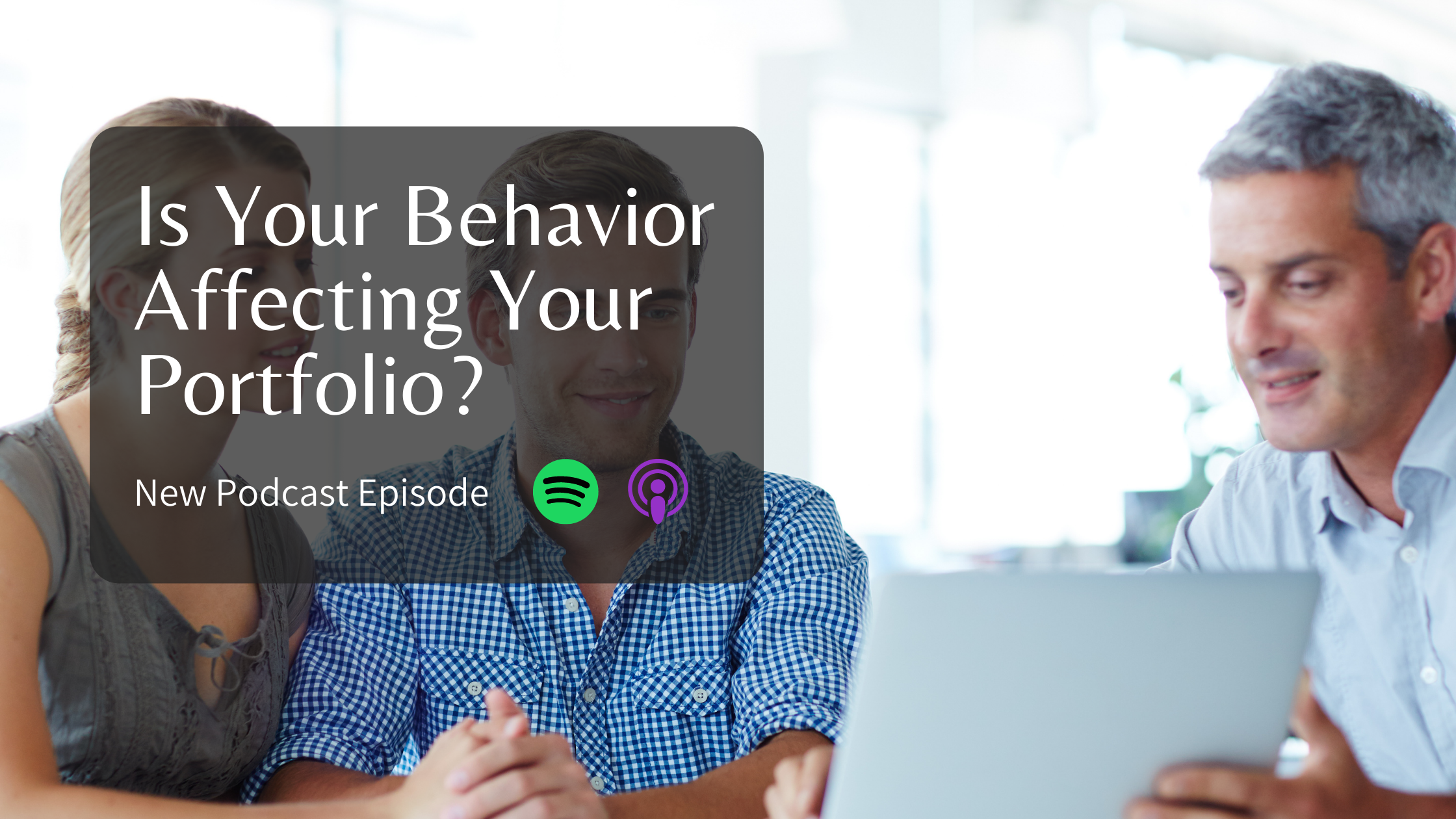
Is Your Behavior Affecting Your Portfolio?
On this episode of A Wiser Retirement Podcast, Casey Smith, Matthews Barnett, CFP®, ChFC®, CLU® and Brad Lyons, CFP® talk about behavioral finance and the impact that your behavior can have on your investment portfolio. They talk about various biases, such as conservatism, overconfidence, herd behavior, and loss aversion. They tell you how to overcome bias and set yourself up for success.
Listen on Apple Podcasts or watch on YouTube:
SUMMARY:
Behavioral Finance
This includes the psychology of finance, sociology, and economy. It helps us understand how we behave and how we have an emotional bias toward decision-making. “Psychology of Money” by Morgan Housel is a quick read if you find this topic interesting. Money is a very emotional thing, so it is very important to understand your decision-making when it comes to finance.
Types of Biases: Conservatism, Overconfidence, Herd Behavior, Conformation, Loss Aversion
Conservatism bias entails sticking to information that you are comfortable with. It can also include relying too heavily on existing data versus new data, only sticking to markets that one knows very well, or solely investing in domestic markets. Overconfidence bias is something we typically see in younger people or from people who know someone in the financial services industry who is giving them tips. Herd behavior is when people are chasing the herd mentality because they don’t want to miss out on what is trendy to invest in. Confirmation bias is when someone has thought about something and then finds an article to support that thought. Loss aversion means that people feel twice as bad about a dollar lost as the joy felt with a dollar earned. That goes back to just trying to avoid losses because it hurts more than what you’re actually gaining.
The Behavior Gap
There’s the rate of return the market gives you, and then there’s your actual rate of return. That gap between the two is known as the behavior gap. That gap is why people often need professional help with their portfolio so that they can stay the course, and focus on their goals.
Setting Yourself Up for Success
You have to set yourself up for success so that a bear market will not steal your future. You want to build a buffer between you and a portfolio so that you don’t do something stupid. Biases can often inhibit you from making rational decisions. The job of a good advisor is to help you understand and recognize that bias and then show you the likely result that will occur if you continue with that behavior or bias.
How Do We Overcome Biases?
There isn’t necessarily a bias-proof portfolio. One of the best ways to protect a portfolio from you is to have enough cash between you and the portfolio so that you don’t have to go to your portfolio in times of an emergency. This prevents you from overreacting if the market behaves poorly. The reality is, a well-constructed, diversified portfolio addresses almost all biases.
Download our white paper on “3 Ways to Grow and Protect Your Portfolio”
TIMESTAMPS:
0:00 Intro
1:30 Types of Biases
12:24 The Behavior Gap
16:00 Setting Yourself Up for Success
25:10 How Do We Overcome Biases?
LINKS:
Learn more about Casey Smith and connect with him on Twitter.
CONNECT:
Twitter, Instagram, Facebook, LinkedIn, and YouTube.
Learn more about the Wiser Wealth Management Roundtable podcast and access previous episodes.
Share This Story, Choose Your Platform!
Wiser Wealth Management, Inc (“Wiser Wealth”) is a registered investment adviser with the U.S. Securities and Exchange Commission (SEC). As a registered investment adviser, Wiser Wealth and its employees are subject to various rules, filings, and requirements. You can visit the SEC’s website here to obtain further information on our firm or investment adviser’s registration.
Wiser Wealth’s website provides general information regarding our business along with access to additional investment related information, various financial calculators, and external / third party links. Material presented on this website is believed to be from reliable sources and is meant for informational purposes only. Wiser Wealth does not endorse or accept responsibility for the content of any third-party website and is not affiliated with any third-party website or social media page. Wiser Wealth does not expressly or implicitly adopt or endorse any of the expressions, opinions or content posted by third party websites or on social media pages. While Wiser Wealth uses reasonable efforts to obtain information from sources it believes to be reliable, we make no representation that the information or opinions contained in our publications are accurate, reliable, or complete.
To the extent that you utilize any financial calculators or links in our website, you acknowledge and understand that the information provided to you should not be construed as personal investment advice from Wiser Wealth or any of its investment professionals. Advice provided by Wiser Wealth is given only within the context of our contractual agreement with the client. Wiser Wealth does not offer legal, accounting or tax advice. Consult your own attorney, accountant, and other professionals for these services.





